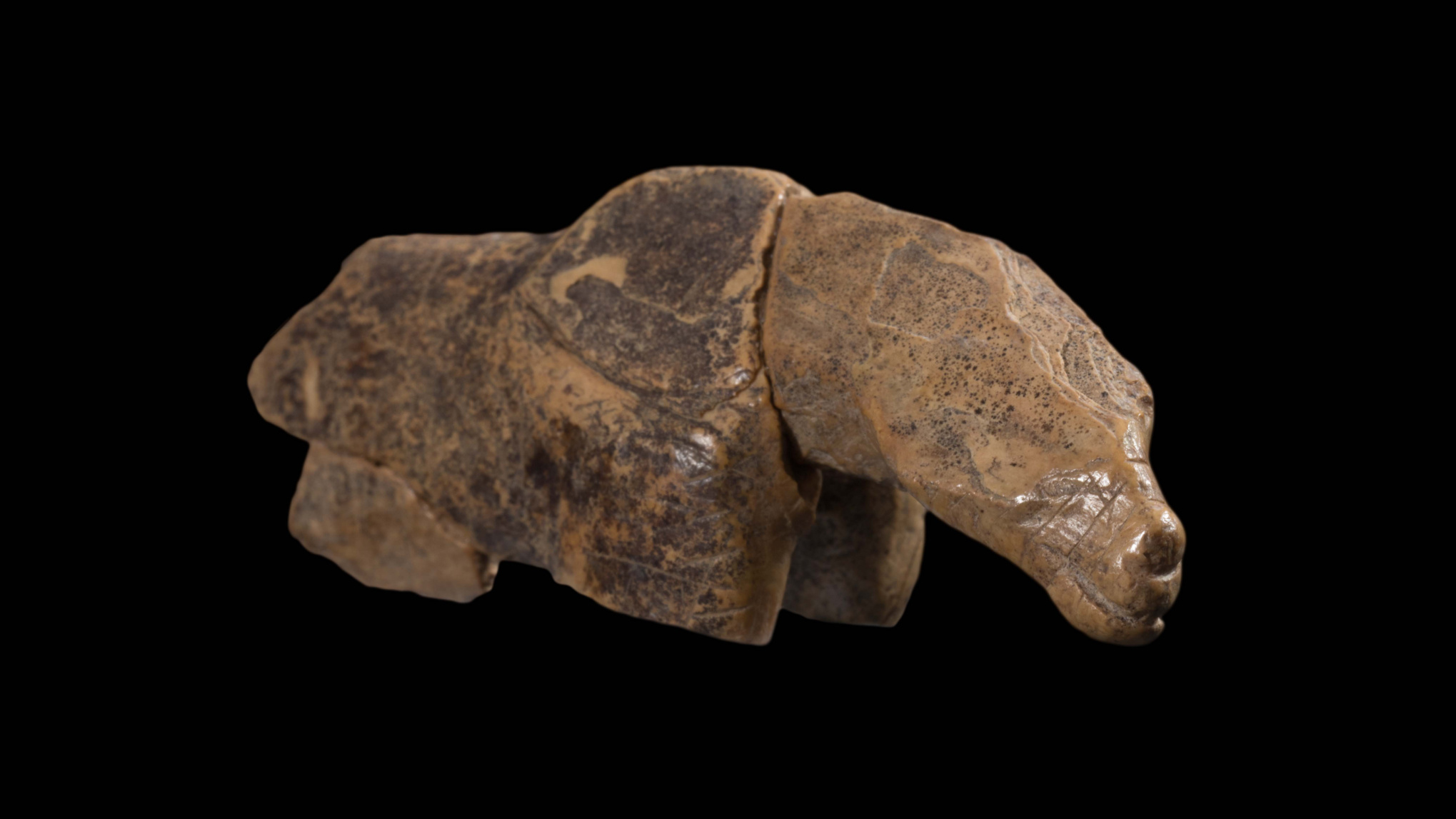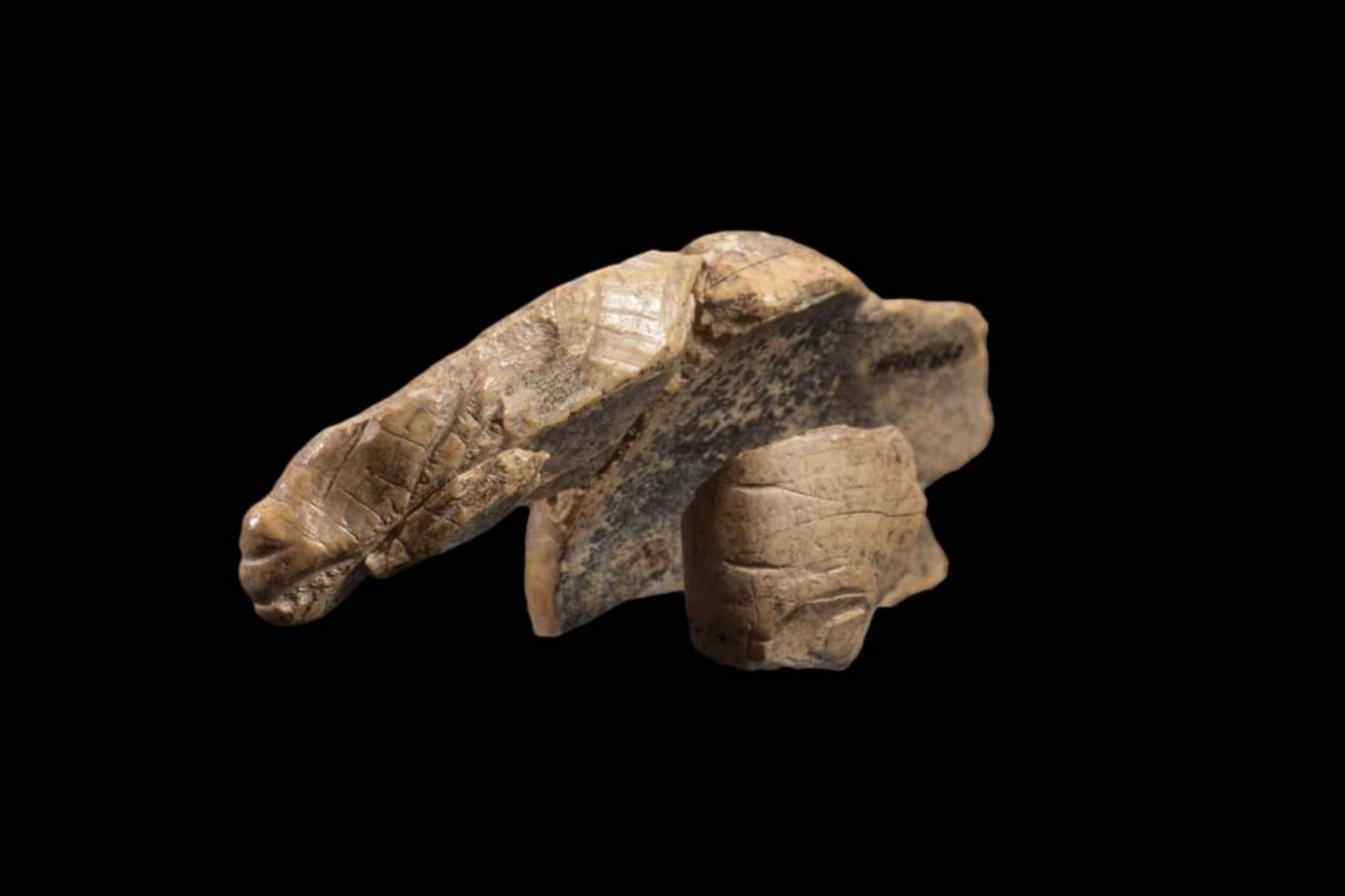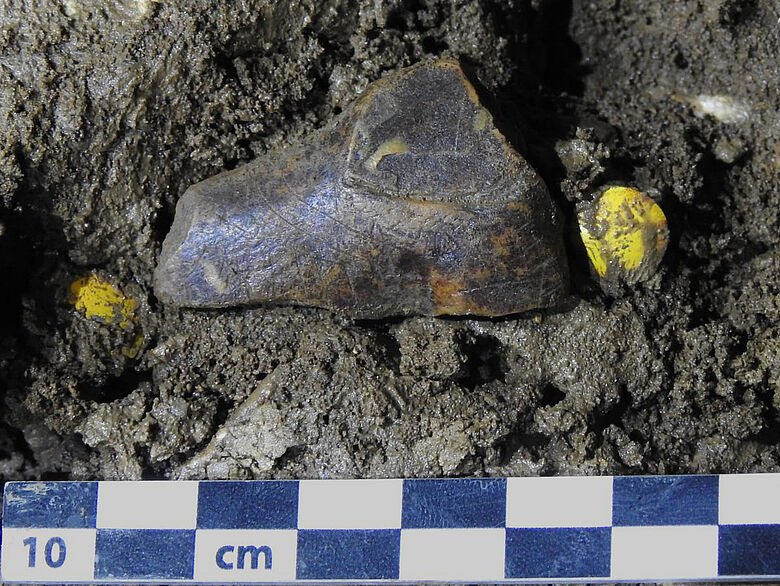During excavations in the World Heritage cave Hohle Fels in the Swabian Jura near Schelklingen, archaeologists recently recovered a fragment of a carefully carved ivory figurine that gives one of the most famous Ice Age works of art a new look: the figurine fragment turned out to be a piece of a body that was perfectly fitted to an animal figurehead found more than 20 years ago. This fragment portrays an entirely different creature, but what type of animal could it be?

The head, recovered in 1999, became famous as the first ivory figurine found in Hohle Fels and had previously been interpreted as part of a horse figure. It is now known by researchers that the ivory figurine is not a horse, but something different.
Professor Nicholas Conard and his team from the Department of Prehistory and Quaternary Ecology at the University of Tübingen are now questioning this assessment: “We still cannot identify the animal species depicted with certainty, but it could be a cave lion or a cave bear,”
According to Professor Conard, the piece of art from the Upper Paleolithic is a representation of a bear. He commented that the figure possesses a “massive body,” a “pronounced bear hump,” and is depicted in a stance that could mimic the “trotting gait of a bear.”
Professor Conard concedes that some of his colleagues claim the figure has the anatomical and physiognomic characteristics of a cave lion. He stated in a press release that “It is by no means always easy to reliably identify Ice Age depictions, especially when they have been preserved in such fragmentary form. It, therefore, makes sense to look extra carefully for the missing parts of this animal in the years to come.”

Pieces of the animal figure were discovered in five different excavation years, thus composing it in its entirety. The recent ivory piece uncovered is 3.99 centimeters long, 2.49 centimeters high, and 0.55 centimeters thick and has a number of delicate, intentionally etched lines on one side. It was promptly distinguished as the right shoulder and thorax of the animal after being dug up, and then attached.
The researchers were motivated to search for additional segments of the figurine in the numerous ivory pieces discovered in Hohle Fels. Subsequently, they were successful in finding a small part of the figure’s right side, which was identified by its engravings. This small torso addition to the statue, like the other components, has extremely delicate lines with the same completion, which exhibits the unity of the figure. It is highly probable that another fragment is related to the figure and it is likely to be a part of the left front leg.

The supplemented ivory figurine has now returned to the urmu, where it is on display to the public. “This figure shows us and our visitors like no other that the archaeological work is never finished,” says Dr. Stefanie Kölbl, managing director of the Prehistoric Museum in Blaubeuren (urmu), which is also a branch of the Archaeological State Museum and a research museum of the University of Tübingen.
The Museum for Paleolithic Art and Music in Baden-Württemberg and the Research Museum of the University of Tübingen explains the Ice Age life of hunters and gatherers on the edge of the Swabian Jura 40,000 years ago. The most prominent exhibit is the original “Venus vom Hohle Fels”.




